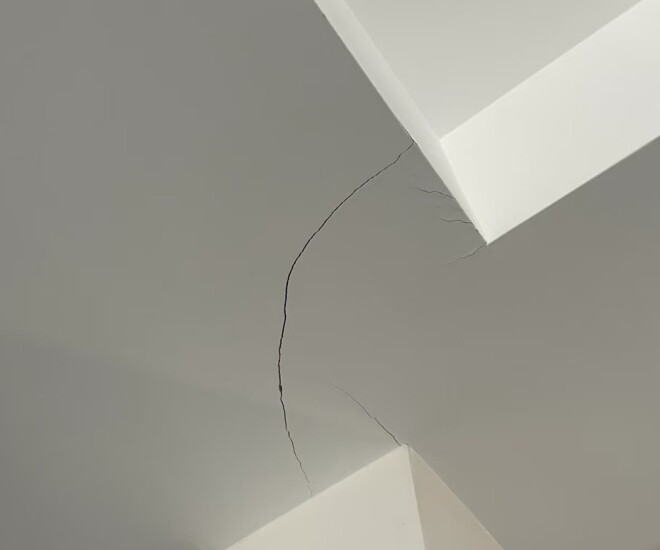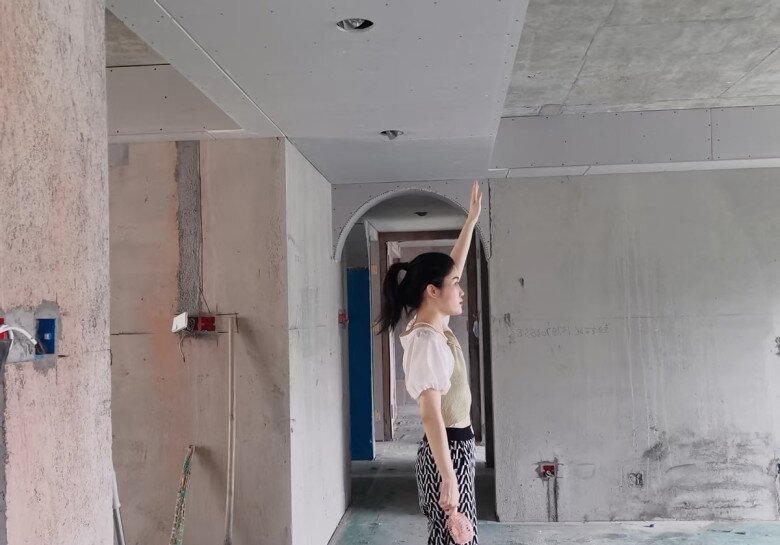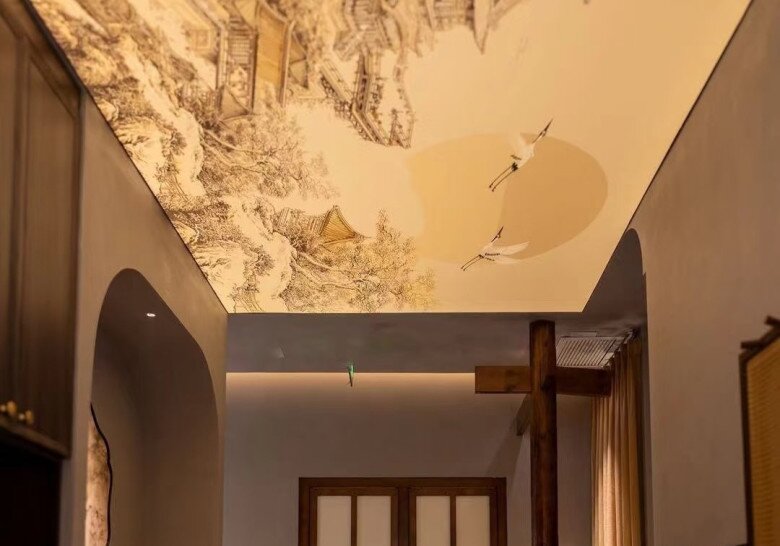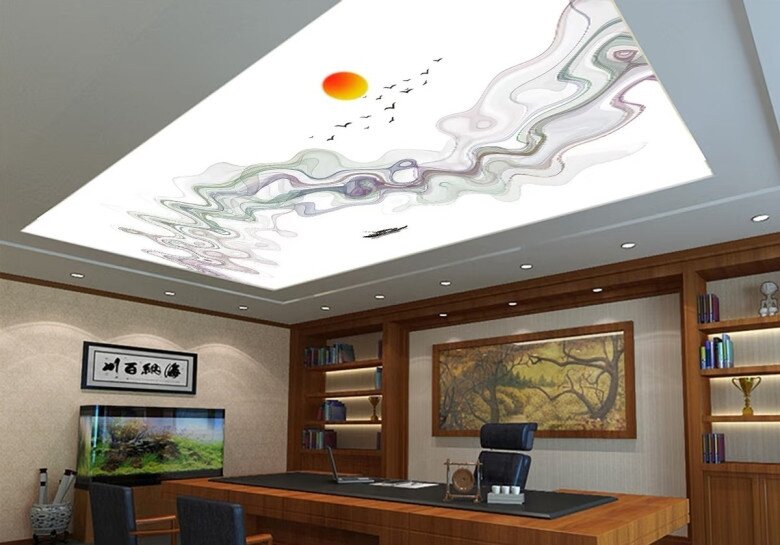1. Why Are People Moving Away From Gypsum Board Ceilings?
– Cracking
One of the main reasons people are moving away from gypsum board ceilings is the issue of cracking. The traditional method of installation involves using a light steel frame and gypsum boards. This includes drilling and attaching hanging bars to the ceiling, followed by assembling the steel frame and securing the gypsum boards with screws. The process is completed by applying a layer of putty and a final coat of paint.
However, a significant drawback of this method is the tendency for cracks to form at the joints between gypsum boards or between the boards and the frame. Many individuals have reported that after just 6 months to a year of occupancy, cracks begin to appear at the corners or joints of the ceiling, which can be quite unsightly.

– Ceiling Height
Another important factor that discourages people from opting for false ceilings is the impact on ceiling height.
Typically, the ceiling height in apartments is around 2.9 meters. However, when you take into account the thickness of the floor of the upper story (usually about 12-13 cm), the actual height is reduced to approximately 2.8 meters, and in some cases, it can be as low as 2.7 meters.
Installing a gypsum board ceiling further reduces the height by about 20 cm, leaving a ceiling height of only about 2.6 meters, which can feel quite low and claustrophobic.

2. Alternative Ceiling Designs That Enhance Your Living Space
When opting out of gypsum board ceilings, people often consider leaving the ceiling raw or choosing simpler alternatives such as aluminum ceilings. Another option you can explore is stretch ceilings, also known as soft membrane ceilings.
Stretch ceilings are a decorative ceiling solution that utilizes flexible plastic membranes, combined with lighting and patterns, to create stunning visual effects. This modern approach completely transforms the traditional gypsum board ceiling.

– Elegance
The first impression of a stretch ceiling is one of elegance and sophistication. It gives the sense of an elevated space. Stretch ceilings are often combined with lighting systems and decorative patterns, creating a unique ambiance.
For instance, a stretch ceiling in the living room with a sky and cloud pattern can make you feel as if you’re standing in the middle of a vast grassland.
Compared to the monotony of gypsum board ceilings, stretch ceilings offer diversity and a contemporary twist, infusing life into your living space.

– No Cracking
One of the biggest advantages of stretch ceilings over gypsum board ceilings is the absence of cracking. With gypsum board ceilings, cracks inevitably appear over time, requiring costly and time-consuming repairs, especially if your family is busy and not always at home.
On the other hand, stretch ceilings are made of a single seamless sheet, eliminating the risk of cracks at joints.

– Minimal Impact on Ceiling Height
Another significant benefit of stretch ceilings is their negligible impact on ceiling height. The installation process is much simpler than that of gypsum board ceilings, eliminating the need for steel frame assembly. The distance between the raw ceiling and the finished stretch ceiling surface is only about 10 cm, and it can even be thinner.
As a result, stretch ceilings are an excellent choice for apartments with low ceilings, as they do not significantly reduce the room’s height.

3. Where Can You Install Stretch Ceilings in Your Home?
When it comes to home decoration, stretch ceilings can be installed in the following areas:
– Entrance and Hallway
Stretch ceilings are ideal for brightening and enhancing the aesthetics of dark and narrow entrance halls and hallways.
– Living Room
Given the relatively large area of living rooms, stretch ceilings can be a great choice to accentuate the space and make it stand out.
– Bedrooms and Home Offices
Stretch ceilings can also be used in bedrooms and home offices to create a more spacious, relaxing, and visually appealing environment.



































